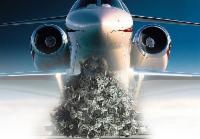The term “Yanking and Banking” in aviation terms means successive steep climbing/banking turns, high G loading and unloading. Also, it is really a lot of fun in an airplane.
Making Money in Business Aviation, however, is a hugely different story. Making money in business aviation rarely if ever happens, and that is no fun at all.
A Long time ago investor Felix Dennis famously said, “if it flies, floats, or fornicates, rent it.”
So, from Felix’s comment we know the “problem” (making money in business aviation) is not a recent development. The basics of the business aviation system is and always has been the problem. And the “problem” exists in every current and accepted operating system in the business aviation industry. And that is no fun at all.
FYI, the “problem” is a 110% Lack of innovation. The simple answer is, Innovate! If you Do not know what needs to be changed, look me up, I did it for the Federl Reserve Bank in 1969 to at their request to fix their float problem, I created and co-founded Jet Support Services Inc., aka JSSI in 1988/89 to correct some banking and maintenance bewilderments.
Business aviation has been in the same quandary since 1962 when I started flying. The dilemma is lack of creativity or more correctly as noted, Lack of innovation. Every iteration of commercial operations is built on the failed versions of its predecessors. Just new names, and the same games, so the “problem” obviously is a systemic issue. That “problem” however can be changed into a massive money generating feedback loop by making a few subtle, but necessary changes.
There are no manuals, no simulators, and there is no oracle of Delphi on how to make money in business aviation. There is however, a zillion versions of the same inane processes using different names, all making the same mistakes, with the same results. Ever wonder why?
Business aviation is not complicated, in fact it is business 101. There is the cost to produce the product, and there is the price the market is willing to pay for the service.
Unfortunately, the cost to produce the product is consistently higher than the market is willing to pay, and that is not a fun problem to have, but it is exactly the problem we face. The amazingly simple fix to all of it, is drastically improved revenue utilization.
How did this happened to happen, as Donald Rumsfeld explained one fine day, there are known knowns, there are unknown unknowns, and there are known unknows that we do not know. That is the best explanation of business aviation I’ve ever heard.
Here are a few issues faced every day in business aviation that validate the theory of unknown knowns. The big known of course is the stringent regulations of the FAA. The unknowns are liabilities which are known but unknown such as the variables, AOG’s, ATC issues. And of course, there are known unknowns which fixed costs are determined by utilization which is always unknown.
Further complicating things is the shift in aircraft manufacturing away from standard size reasonably priced corporate aircraft to large corporate long-haul aircraft costing multi-millions more. That ludicrous pricing defeats the idea of a corporate aircraft as a viable transportation system.
So, it is not exactly business 101, but every facet mentioned above is easy to fix by alternative utilization systems, in addition to containing pricing with a proven control system.
So, what we know for sure is that business aviation, as it exists today, has the same debilitating problems it had back in 1962. Lack of innovation, products, methods, systems, and processes to resolve the knowns, the unknowns, and the unknown knowns.
I have been around business aviation since 1962. I have over 21,000 PIC flight hours and I am, typed in several jets. I have worked on both the revenue and the corporate/charter pilot side of business aviation.
As mentioned earlier, I created two highly successful companies that are still operating today operations and now I found the solution to the “problems” the aviation industry faces today.
On a personal level, I have a particular skill which is hard to find if not impossible to find in business aviation industry. I am open to innovation and know how to use it and am highly experienced delivering cutting-edge solutions. So, along the way when problems came along, I innovated.
 There is a reason I can easily adapt to the concept of innovation better than most of my contemporaries, and it is simple. I have the skill set of improvisation. Those come from the fact that I was a wannabe jazz piano player growing up. What is unique with Jazz is there exists the concept of taking a main theme and changing it to what I wanted it to be. However, those changes are always within an established structure. So, having the inherent ability to improvise with music, and jamming, it was a natural evolution to be innovative with something I did all the time, aviation.
There is a reason I can easily adapt to the concept of innovation better than most of my contemporaries, and it is simple. I have the skill set of improvisation. Those come from the fact that I was a wannabe jazz piano player growing up. What is unique with Jazz is there exists the concept of taking a main theme and changing it to what I wanted it to be. However, those changes are always within an established structure. So, having the inherent ability to improvise with music, and jamming, it was a natural evolution to be innovative with something I did all the time, aviation.
What all this means is that making changes on the fly (so to speak) are normal and natural to me. And I have proven it. And I can do the same for you.
What I can modify for a current business aviation system is three things. Those changes will make business aviation millions if not billions. The three things are control of 1.) The variables. 2.) The fixed 3.) increase revenue utilization by hundreds of percentiles while building all of them into a feedback loop that will generate millions and the control of business aviation. All of these are ever day factors in business aviation, and all three have been used wrongly since my inception to the industry in 1962.
People educated in the aviation industry are intrinsically taught not to improvise. As I know all too well, we are taught that situational awareness is everything needed to avoid spatial disorientation. Predictably the best result is always going to be the safe going along to get along mantra. That is why since 1962 nothing has changed. And the few new models that have come along since 1962 like fractional and piggyback chartering are the same 1962 Chevy with a new coat of paint.
To find out more please contact me at LinkedIn https://www.linkedin.com/in/rickeriksen/


